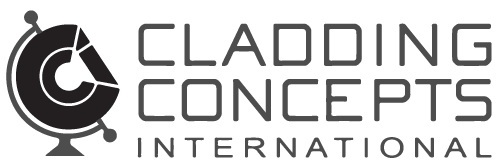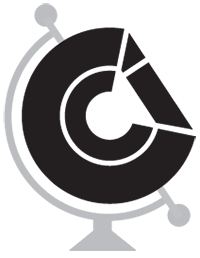How Building Envelopes Drive Sustainability Certifications for Building Projects
As sustainability becomes an increasingly important consideration in the design and construction of buildings, building envelopes play a crucial role in achieving sustainability certifications for a building project. Building envelopes are responsible for protecting the building from the elements while also regulating temperature and ventilation.
Here at Cladding Concepts International, we represents companies who are industry stewards for responsible manufacturing methods and environmentally positive products. It’s our mission to offer clients the highest quality, thoughtfully sourced products available on the market. From production to installation, our dedicated LEED certified experts keep sustainability on the forefront.
In order to achieve sustainability certifications, such as LEED (Leadership in Energy and Environmental Design), BREEAM (Building Research Establishment Environmental Assessment Method), or Green Star, building envelopes must meet specific criteria related to energy efficiency, material selection, and environmental impact.
Energy Efficiency in Sustainable Cladding Design
One of the most important considerations for building envelopes in sustainable design is energy efficiency. The building envelope is responsible for preventing heat loss and gain, which can have a significant impact on the building's energy consumption and carbon footprint. Sustainable building envelopes should be designed to minimize air leakage, use high-performance insulation materials, and incorporate energy-efficient glazing and shading systems.
Rainscreen attachment systems can play a crucial role in a building's energy efficiency and thermal regulation. These systems provide a gap between the exterior cladding and the building's sheathing, allowing air to circulate and moisture to escape. By preventing moisture buildup, rainscreen attachment systems can reduce the likelihood of mold and other water damage issues. Additionally, the air gap created by these systems can improve a building's thermal performance by creating a buffer between the exterior temperature and the interior climate-controlled space. This can reduce the need for heating and cooling systems, resulting in significant energy savings and reducing a building's carbon footprint. Using a rainscreen attachment system on your buildings exterior can contribute to LEED certification points in several categories, such as Energy and Atmosphere, Materials and Resources, and Indoor Environmental Quality.
Sustainable Cladding Materials for Eco-Friendly Design
Another important consideration for sustainable building envelopes is material selection. Sustainable building envelopes should be constructed using materials that are environmentally friendly, non-toxic, and have a low carbon footprint. This can include materials such as terracotta, phenolic panels, and brick.
An example of this is the High-Pressure Laminate (HPL) panels from Fundermax, that may contribute to LEED standards in a number of categories:
Max Compact Exterior and Max Compact Interior F-quality panels are FSC certified and consist of 65% natural fibers. This may contribute to MRc "Building Product Disclosure and Optimization Sourcing of Raw Materials" under "Leadership Extraction Practices."
Max Compact Interior, Max Compact Interior Plus, and Max Resistance2 contains 100% Post Consumer Recycled Paper. These products contain 65% paper by weight and may contribute to: MRc “Building Product Disclosure and Optimization Sourcing of Raw Materials”
Fundermax is also ahead of the curve in being able to provide Environmental Product Declaration (EPD) and Health Product Declaration (HPD) Certificates.
Our GreenGuard certificates may also help your project gain IEQ credits.
The EPD may contribute to LEED MRc "Building Product Disclosure and Optimization Environmental Product Declarations."
The HPD may contribute to LEED MRc " Building Product Disclosure and Optimization Sourcing Material Ingredients."
Fundermax is GREENGUARD certified and GREENGUARD GOLD certified in some cases. This helps customers know their interior products and materials have low emissions, which aids in providing a safe building interior environment.
Minimizing Environmental Impact Through Building Envelopes
Sustainable building envelopes should be designed to minimize the building's environmental impact throughout its lifecycle. This includes considerations such as the use of renewable energy sources, such as solar panels, the implementation of rainscreen attachment systems for optimal thermal regulation, or self-cleaning technology allowing for minimal building maintenance.
Hytect Technology, used on terracotta by Agrob Buchtal, uses the natural elements to maintain a clean façade for years to come while permanantly improving the air quality around the building. Air pollutants such as nitrogen oxides from traffic or industry practices are reduced significantly, permanently improving the ambient air of the building.
Thanks to its innovative technology, Hytect ceramic facades help buildings maintain their attractive appearance while reducing the environmental impact of maintenance. When it rains, dust, dirt, and other particles are naturally removed from the façade, minimizing the need for costly and polluting cleaning methods. Additionally, graffiti can be easily removed without damaging the surface, eliminating the need for harsh chemicals or abrasive techniques. This sustainable approach not only saves money on maintenance costs but also reduces the building's carbon footprint. By choosing Hytect, you can ensure that your façade remains presentable and sustainable for many years to come while contributing to air purification from traffic exhaust and industry manufacturing.
Sustainable Façade Design in the Real World
The Charlotte of the Upper West Side is an award-winning residential building located in Manhattan that has received LEED Gold, Energy Star certifications, and Passive House, among others, for its sustainable features. One of its key sustainability features is its innovative façade design, which incorporates a series of high-performance custom terracotta baguettes and an insulated rain screen system to reduce the building's energy consumption by up to 90% and protect against water damage. The façade's design also provides ample natural light and ventilation for residents, further improving energy efficiency and indoor air quality.
We worked closely with the BKSK Architects to develop the custom terracotta baguettes used on the façade to create a sustainable sunscreen. The baguettes were designed to control the amount of sunlight and heat that enters the building, while also providing an aesthetically pleasing and durable exterior. We utilized our expertise in terracotta through our network of sustainable manufactures to produce the baguettes to the architect's exact specifications, ensuring that they would seamlessly integrate with the building's design and perform at the highest level of sustainability. Through a collaborative process of design and manufacturing, we were able to create a unique and effective solution for managing solar gain, reducing energy consumption, and enhancing the building's overall sustainability.
By earning LEED Gold, Energy Star, and Passive House certifications, the Charlotte of the Upper West Side sets a high bar for sustainable building practices and demonstrates that it is possible to combine luxury living with environmental responsibility.
Achieving sustainability certifications for a building project requires a holistic approach to sustainable design, and building envelopes play a critical role in this process. By designing building envelopes that are energy-efficient, environmentally friendly, and promote sustainable practices, designers and builders can create buildings that are not only aesthetically pleasing and functional but also contribute to a more sustainable future. Learn more about our commitment to sustainability and stop by our façade lab today to see how we can help you build for the future.






